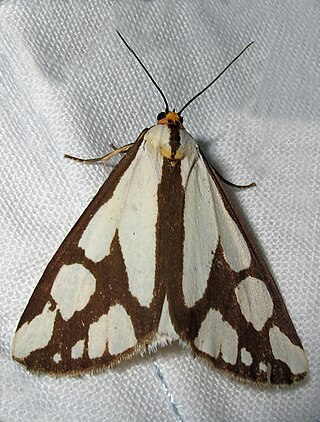
Acacia confusa is a perennial tree native to South-East Asia. Some common names for it are ayangile, small Philippine acacia, Formosa acacia, Philippine Wattle, and Formosan koa. It grows to a height of 15 m. The tree has become very common in many tropical Pacific areas, including Hawaii, where the species is considered invasive.

Weissella is a genus of gram-positive bacteria placed within the family Lactobacillaceae, formerly considered species of the Leuconostoc paramesenteroides group. The morphology of Weissella species varies from spherical or lenticular cells to irregular rods. Several strains of Weissella cibaria and Weissella confusa have shown probiotic potential. In particular, the cell-free culture supernatant of Weissella confusa shows a number of beneficial characteristics, such as antibacterial potential and anti-inflammatory efficiency. However, several strains of W. confusa are opportunistic bacteria. A number of studies have been done on the safety of the bacterial species, indicating their probiotic potential. The Senate Commission on Food Safety has validated the use of W. confusa in food.

Iris confusa (; also known as the bamboo iris is a species of iris. It is also in the subgenus Limniris and in the section Lophiris. It is a rhizomatous perennial plant, native to Western China. It has flowers which range from white to a soft lavender or pale blue in colour, with orange-yellow crests and purple dots. The plant's broad, shiny leaves are attached to bamboo-like stems. It is cultivated as an ornamental plant in temperate regions.

Macdunnoughia confusa, or Dewick’s plusia, is a moth of the family Noctuidae. It was first described by James Francis Stephens in 1850. It is found from Europe through Siberia to Japan and is also present in Lebanon and Israel.

Haploa confusa, the confused haploa or Lyman's haploa, is a moth of the family Erebidae that occurs in North America. The species was first described by H. H. Lyman in 1887. The caterpillars feed on a hound's tongue.

Hadena confusa, the marbled coronet, is a species of moth of the family Noctuidae. It is found in Europe, North Africa and West Asia and Central Asia.
Sympistis confusa is a moth of the family Noctuidae first described by Christian Friedrich Freyer in 1842. It is found in Iran, Iraq, Asia Minor, northwards to Turkmenistan, the European part of southeast Russia and the Black Sea shores of Bulgaria.

Methona confusa, the giant glasswing, is a species of clearwinged butterfly in the order Lepidoptera and in the family Nymphalidae. It can be found in some Central and South American countries in regions with forests and mountains.

Spatalla is a genus containing 20 species of flowering plants, commonly known as "spoons", in the family Proteaceae. The genus is endemic to the Cape Floristic Region of South Africa where it is associated with fynbos habitats. The species are all small shrubs. The name is derived from the Greek, meaning “wantonness”, alluding to the plants’ unusually large pollen-presenters. Most species are threatened.

Pterolophia is a genus of longhorn beetles of the subfamily Lamiinae, containing the following species:
Spirotropis confusa is a species of sea snail, a marine gastropod mollusk in the family Drilliidae.
Pterolophia preapicecarinata is a species of beetle in the family Cerambycidae, the tribe Pteropliini and the genus Pterolophia. It was described by Stephan von Breuning in 1969 from an original specimen from Nkolkoumou, Cameroon.

Pterolophia melanura is a species of beetle in the family Cerambycidae. It was described by Francis Polkinghorne Pascoe in 1857. It has a wide distribution in Asia.
Pterolophia undulata is a species of beetle in the family Cerambycidae. It was described by Francis Polkinghorne Pascoe in 1862. It is known from Moluccas.
Pterolophia gibbosipennis is a species of beetle in the family Cerambycidae. It was described by Maurice Pic in 1926.
Pterolophia instabilis is a species of beetle in the family Cerambycidae. It was described by Per Olof Christopher Aurivillius in 1922. It is known from Seychelles.
Pterolophia angulata is a species of beetle in the family Cerambycidae. It was described by Hermann Julius Kolbe in 1893. It has a wide distribution in Africa. It feeds on Lagerstroemia indica.
Pterolophia guineensis is a species of beetle in the family Cerambycidae. It was described by James Thomson in 1864, originally under the genus Alyattes.
Pterolophia rustenburgi is a species of beetle in the family Cerambycidae. It was described by William Lucas Distant in 1898.








